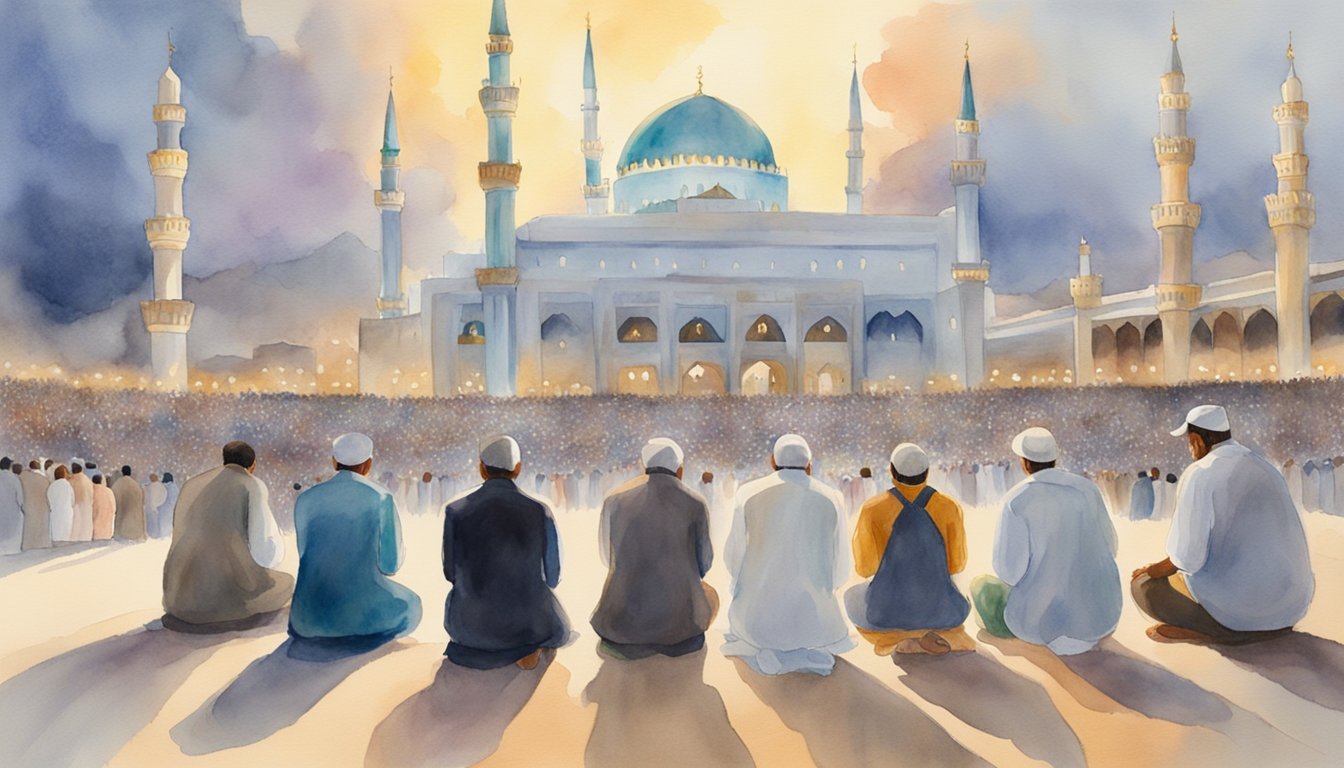Essentials of Islamic Call to Prayer
The Islamic call to prayer, known as the Adhan, is an integral practice symbolizing faith and worship in Islam, reflecting the community’s commitment to Allah and the principles of Muhammad’s teachings.
Origins and Significance
The tradition of the call to prayer dates back to the time of Prophet Muhammad. It serves as a public pronouncement of faith, affirming the oneness of Allah and the prophethood of Muhammad. The Adhan is also a symbolic invitation calling the faithful to pause from the mundane activities of life and connect with their Creator, reiterating the centrality of worship in a Muslim’s life.
The Adhan and Its Components
Recited in Arabic, the Adhan comprises specific phrases that declare the greatness of Allah and the lack of any deity other than Allah, highlight the surety of success through worship, and confirm Muhammad as the Messenger of Allah. This rhythmic announcement includes calls to prayer and a prompt to the faithful to hasten to worship, serving both as a time signal and a reminder of Islamic principles.
The Role of the Muezzin
The muezzin is the person appointed to recite the Adhan and traditionally does so from the minaret of the mosque. The position has been esteemed since the days of the early Muslims, with Bilal, one of Muhammad’s companions, known as the first muezzin in Islam. In contemporary times, the muezzin still holds a respected role, ensuring the call reaches the community clearly, thus fulfilling a significant ritual that marks the rhythm of daily Muslim worship.
Prayer Rituals and Times

The Islamic call to prayer is a profound expression of faith and adherence to a disciplined spiritual regime. Here resides the core of Islamic daily worship, punctuated by specific timings for each prayer reflecting moments in the day.
Five Daily Prayers and Their Times
Muslims are obligated to perform salah, the formal worship, five times a day. Each prayer has a specified time range:
- Fajr: The day begins with the Fajr prayer, offered before sunrise.
- Dhuhr: After the sun passes its zenith, Muslims offer the Dhuhr prayer.
- Asr: The Asr prayer is due in the late afternoon, when shadows start to lengthen.
- Maghrib: Just after sunset, Muslims gather for the Maghrib prayer.
- Isha: The day concludes with the Isha prayer when the twilight has disappeared.
These five daily prayers and their times are fundamental to the Islamic faith, providing a structure to the day.
Iqama and the Commencement of Prayer
The iqama is the second call that signals the start of the prayer. After the adhan, the muezzin announces the iqama, which has a shorter format than the adhan. Worshippers then line up for the congregational prayer, led by the imam. The phrase “Allahu Akbar” punctuates the air, translating to “God is the Greatest,” signifying the start of salah inside the mosque, where the congregation stands in straight rows facing the qibla, the direction of the Kaaba in Mecca.
Variations in Practice Among Muslim Sects
Practices among Muslim sects such as Sunni and Shia may exhibit slight differences. For instance, Shia Muslims may combine Dhuhr and Asr prayers, as well as the Maghrib and Isha prayers. Conversely, Sunni Muslims generally pray these at their separate times. Elements such as the call to prayer may be performed slightly differently, and the Friday prayer, known as Jum’ah, is a special congregational prayer that replaces Dhuhr and emphasizes community gathering. Details like the niyyah (intention) and actions like wudu (ablution) are integral to the preparation for prayer and are observed by all sects, underscoring unity in diversity.
In these rituals, the historical figure Bilal ibn Rabah al-Habashi is remembered as a revered muezzin during the time of the Prophet Muhammad, illustrating the long-standing nature of these practices. The recording and amplification of the adhan through loudspeakers is a more modern adaptation, ensuring that the call to prayer reaches all those in the vicinity.

